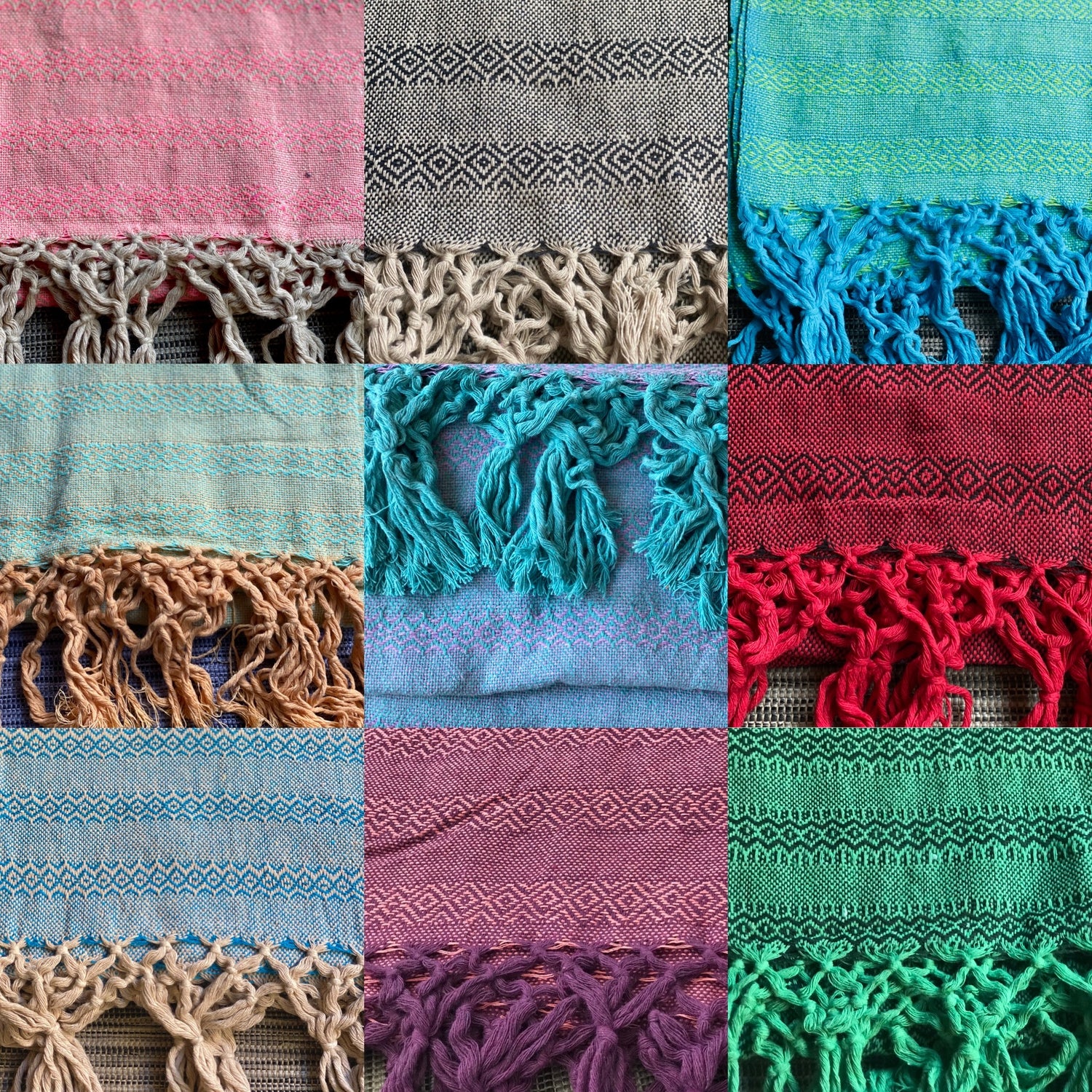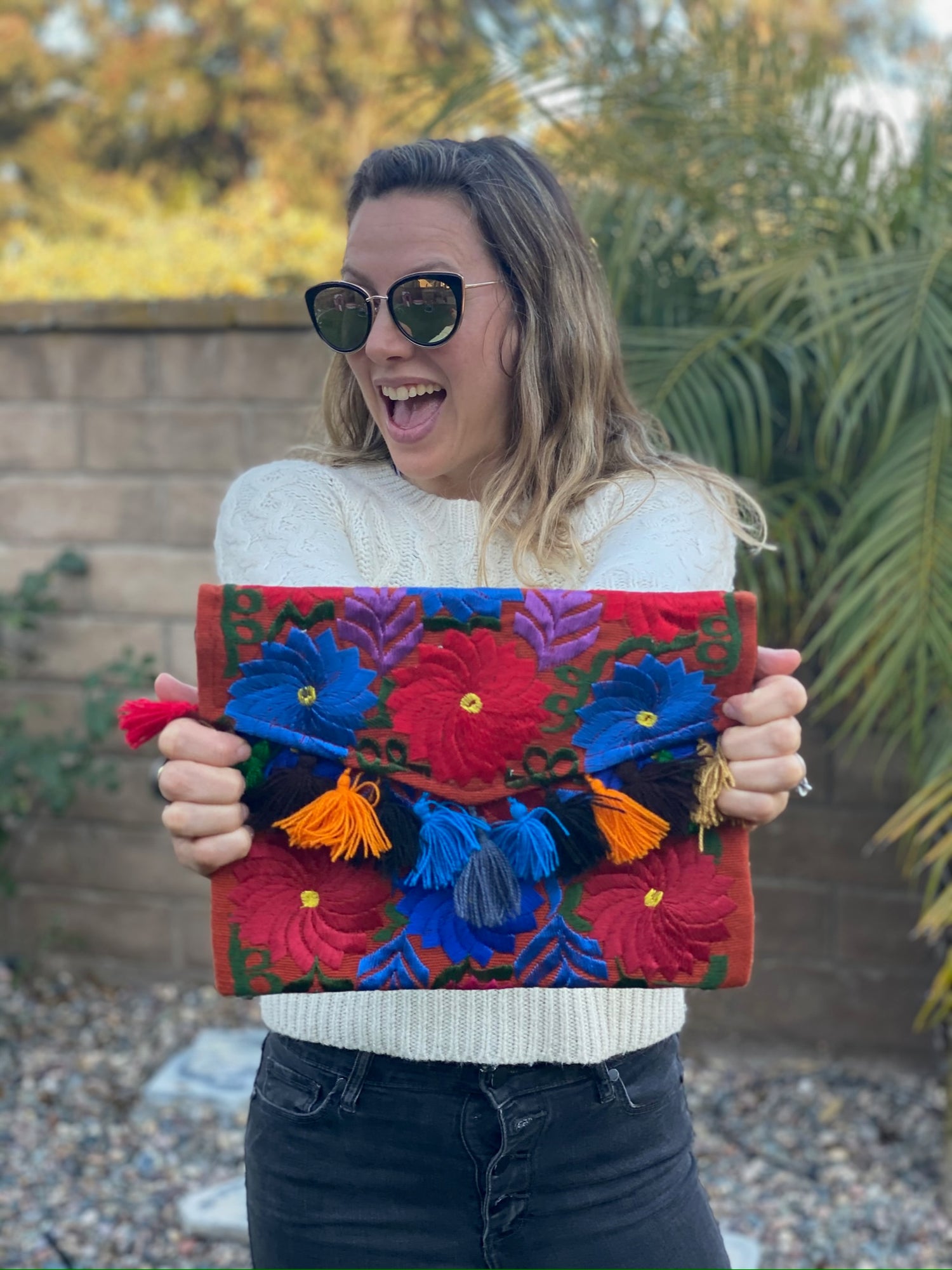The vibrant colors and intricate patterns of Mexican rebozos offer more than just style; they serve as powerful symbols of cultural identity and heritage.
Each hue and design element reflects deeper meanings, connecting the wearer to traditions and stories that have been passed down through generations.
As you explore these beautiful garments, you will uncover how artisans use specific colors to convey emotions, signify events, and honor their communities.

Rebozos are not only practical accessories but also significant cultural artifacts that represent Mexican history and social customs. The craftsmanship involved in making these shawls is meticulous, as artisans weave their culture into every piece.
By understanding these symbols, you gain insight into the rich tapestry of Mexican life and the vital role that rebozos play in it.
As you dive into the symbolism behind colors and patterns in Mexican rebozos, you will discover their importance in expressing identity, heritage, and traditions.
This journey will deepen your appreciation for these unique garments and their place in the broader cultural landscape of Mexico.
Key Takeaways
- Rebozos symbolize cultural identity and heritage through their colors and patterns.
- Each design element reflects specific emotions and traditional stories.
- Understanding these symbols enhances appreciation for Mexican culture and craftsmanship.
Historical and Cultural Context

The history of the rebozo is rich and complex, deeply rooted in Mexican culture. This section explores its origins, significance in society, and the cultural practices associated with it. Understanding these aspects helps you appreciate the rebozo beyond its aesthetic beauty.
Origin and Evolution of the Rebozo
The rebozo has its origins in the pre-Hispanic era, crafted by indigenous women from materials like cotton and agave fibers. These shawls evolved over time, influenced by the arrival of Spanish colonizers.
During the colonial period, rebozos blended different styles and techniques, reflecting both indigenous and Spanish cultures.
As centuries progressed, the rebozo became a symbol of identity for Mexican women. It showcased their craftsmanship and was often used to wrap children, highlighting its role in motherhood.
The traditional techniques employed have been passed down through generations, preserving this cultural heritage.
Rebozos in Mexican Society
In Mexican society, rebozos serve not just as garments but also as a marker of social status. They are often worn during significant life events like weddings and ceremonies.
Frida Kahlo and María Félix, iconic figures in Mexican history, showcased rebozos as symbols of femininity and pride.
These shawls also play a role in cultural celebrations, such as Mexican Independence Day. Wearing a rebozo during these events signifies their importance in Mexican heritage and identity.
The colors and patterns often denote regional styles and can represent various traditions.
Cultural Practices and Symbolism
The cultural practices surrounding rebozos highlight their deep symbolism. For many, wearing a rebozo during childbirth symbolizes protection and care.
In weddings, the rebozo can signify the union between families and the continuation of traditions.
Customs linked to rebozos vary by region, with each design telling a story. The vibrant colors often reflect the emotional and spiritual significance behind the shawl.
You will find that each pattern carries meaning related to femininity, motherhood, and cultural legacy, making the rebozo an enduring symbol in Mexican culture.
Design and Craftsmanship

The design and craftsmanship of Mexican rebozos showcase the rich cultural heritage and skills of artisans. They use techniques that are both traditional and innovative, leading to beautiful textiles that carry deep meanings.
Weaving Techniques and Materials
Artisans employ various weaving techniques to create rebozos. Among the most notable is the backstrap loom technique, commonly used by Indigenous communities in regions like Tenancingo, Chiapas, and Michoacán.
This method enables weavers to have direct control over tension, allowing for intricate designs.
Other techniques include the pedal loom, which is capable of producing wider fabrics more quickly.
Materials vary widely, with common choices being cotton, silk, and wool. Some artisans also use agave fibers to create unique textures.
Natural dyes, often derived from plants like indigo and cochineal, enhance the vibrant colors found in these textiles.
Patterns, Colors, and Their Meanings
The patterns and colors of rebozos are not simply for decoration; they carry significant symbolism. Each color reflects beliefs and values within the community.
For instance, red might symbolize strength and blue could represent energy.
Artisans create intricate designs using motifs that tell stories and reflect personal and communal experiences.
The fringe at the ends of a rebozo often symbolizes freedom and vitality. Patterns can represent local flora and fauna, capturing the essence of the landscape.
Innovation and Modern Relevance
In recent years, rebozos have seen a resurgence in contemporary fashion. Many artisans merge traditional craftsmanship with modern styles, allowing rebozos to be versatile accessories for everyday wear.
This blend of art and practicality demonstrates the continued artistic expression found in these textiles.
As craftsmanship evolves, it helps reinforce a sense of resilience and connection to cultural roots while appealing to a global audience. The rebozo remains a timeless symbol of identity and heritage.
Frequently Asked Questions

This section addresses common inquiries about the symbolism of colors and patterns in Mexican rebozos. You will find insights into the meanings behind these elements, as well as their practical uses in cultural practices.
What is the significance of different colors used in Mexican rebozos?
Colors in Mexican rebozos often carry deep meanings. For instance, red may symbolize love and passion, while blue can represent spirituality.
Artisans choose colors based on personal or communal significance, making each piece unique.
How are patterns and designs on Mexican rebozos imbued with cultural meaning?
Patterns on rebozos reflect various cultural stories and traditions. Geometric shapes might symbolize the cosmos, linking the fabric to the universe.
Each design element resonates with the artisan's heritage and the values they hold.
In what ways are Mexican rebozos used during pregnancy and childbirth?
Rebozos are traditionally used for support during pregnancy and childbirth. Women may wrap themselves in a rebozo for comfort and stability.
This practice helps relieve physical strain and ensures a sense of security during these significant life events.
Can you explain the traditional ways of wearing a Mexican rebozo?
A rebozo can be worn in several ways, such as draped over the shoulders or wrapped around the body. You might see it used as a shawl, a headscarf, or even as a baby carrier.
Each style serves different functions and reflects personal preference.
What are the various techniques associated with the use of rebozos?
Techniques for creating rebozos include weaving, dyeing, and finishing methods.
Artisans often use handwoven techniques to ensure quality. The unique craftsmanship showcased in each rebozo adds to its value and cultural significance.
What does the rebozo represent in Mexican cultural identity and heritage?
The rebozo is a strong symbol of Mexican culture and identity. It represents tradition, artistry, and community.
For many, wearing or creating a rebozo connects them to their heritage and the stories of their ancestors.




